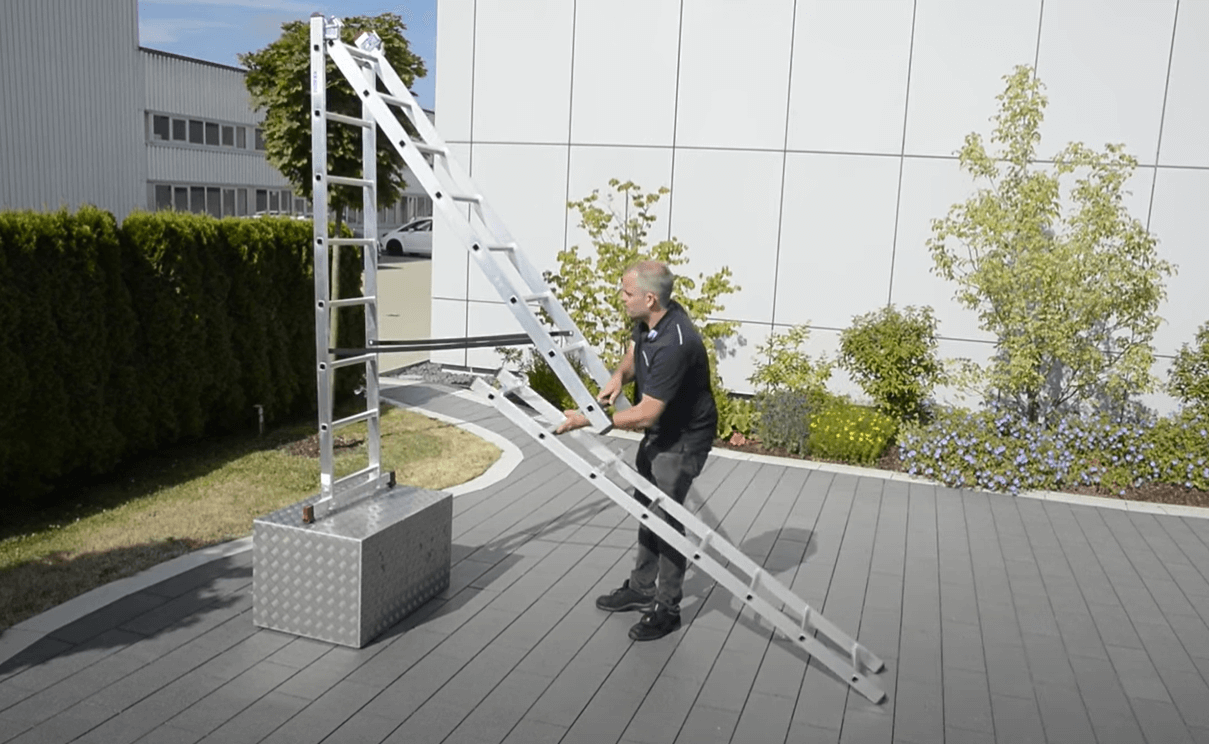Increasing the width with the traverse is intended to increase occupational safety when working on these types of ladders and helps to reduce accidents. The amendments have been revised by the European Committee for Standardisation (CEN) on the initiative of consumer protection organisations. Other contributors were test institutes, professional associations and manufacturers.
Existing standards are reviewed every 5 years by the standardisation bodies based on the current state of the art. If there are changes, the standard will be adapted and revised accordingly.
The standardisation bodies are made up of delegations from the various member countries of CEN (“European Committee for Standardisation“, i.e. the European Committee for Standardisation. Their role is to advise and decide on changes to individual standards. These secondments include members of government bodies, professional associations, manufacturers and other interested parties. The members of CEN are the national standards institutes of the following countries: Belgium, Bulgaria, Bulgaria, Croatia, Cyprus, Czech Republic, Denmark, Estonia, Finland, France, Germany, Greece, Hungary, Iceland, Ireland, Italy, Latvia, Lithuania, Luxembourg, Malta, Netherlands, Norway, Austria, Poland, Portugal, Romania, Serbia, Slovakia, Slovenia, Spain, Sweden, Switzerland, Turkey, the former Yugoslav Republic of Macedonia, United Kingdom and Spain.











